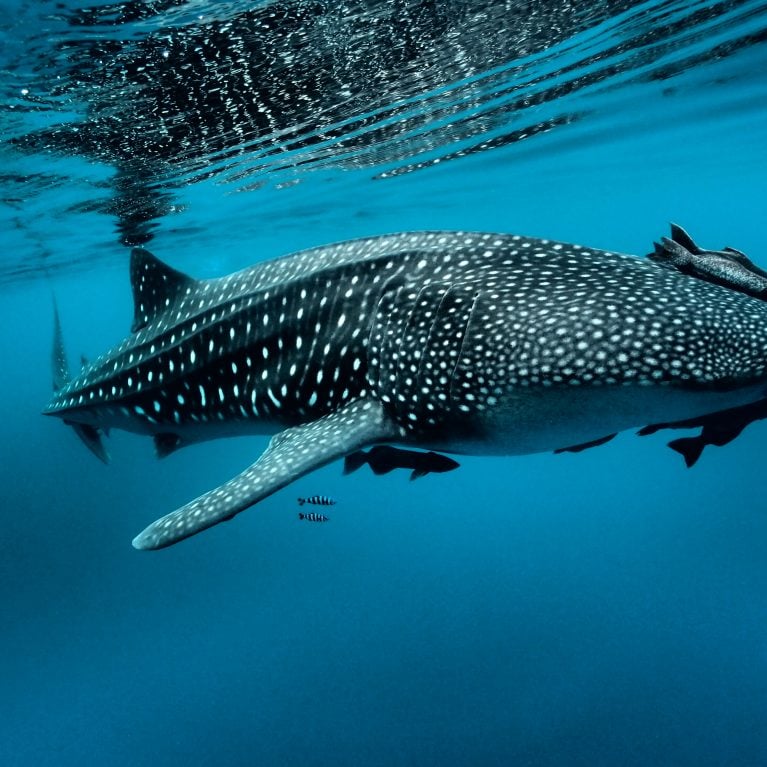Giants of Peru
Peru is home to a population of mysterious giants: whale sharks. Dení wants to know why they are there. She has been studying these huge animals in Mexico for four years and is curious about whether the populations are related.
I am originally from Mexico City, and there is no ocean there! But my parents were divers and during our holidays we used to go to the beach and camp. I remember once watching a sea turtle lay her eggs. It was awesome yet sad, because the local people took the eggs. I knew then for the first time that I wanted to do something for conservation. My parents also took us to Cozumel where my brother and I would snorkel, following the bubbles from the surface while they were diving below us. When I was about seven years old,...

Evaluate the presence of whale shark Rhincodon typus off Peru
This project aims to do crucial baseline research of the whale shark in Peru to determine basic information, such as seasonality, abundance and population structure – information needed to implement conservation actions.
The lack of information about the whale shark population in Peru limits the generation of a proper management plan for the species at a local level. Monitoring of the population is critical for appropriate management and to determine whether whale sharks have the potential to be a tourist attraction, which could offer an alternative livelihood for the fishing community.
Distributed throughout the tropics and inhabiting the epipelagic zone, the whale shark is a K-selected species, which makes it vulnerable to exploitation. The whale shark is also highly migratory, and because of this, sustainable management depends on international collaboration. In 2000 the whale shark was listed as Vulnerable by the IUCN Red List due to population declines, and the species is also listed on Appendix II of CITES (Convention on International Trade in Endangered Species). However, our knowledge of whale shark biology, ecology and behaviour is limited and hampers our ability to implement appropriate protection for conservation. Knowledge of whale shark ecology is most advanced in the Indian Ocean. In the Pacific there are whale shark research programmes in Taiwan, the Philippines, Mexico and the Galapagos.
Although there are no such programmes in Peru, the presence of whale sharks off the country’s coast has been confirmed since 1955. In order to generate knowledge about these sharks, we did surveys focused on local fishermen and dive companies. From these we determined that the most frequent occurrence of whale sharks in the country is at El Ñuro.
- Determine whale shark seasonality and abundance in Peru.
- Generate a photo-identification library of these animals.
- Estimate the population structure of whale sharks in Peru.
- Compare the photo-identification library of whale sharks in Peru with those from the Galapagos and the Gulf of California

